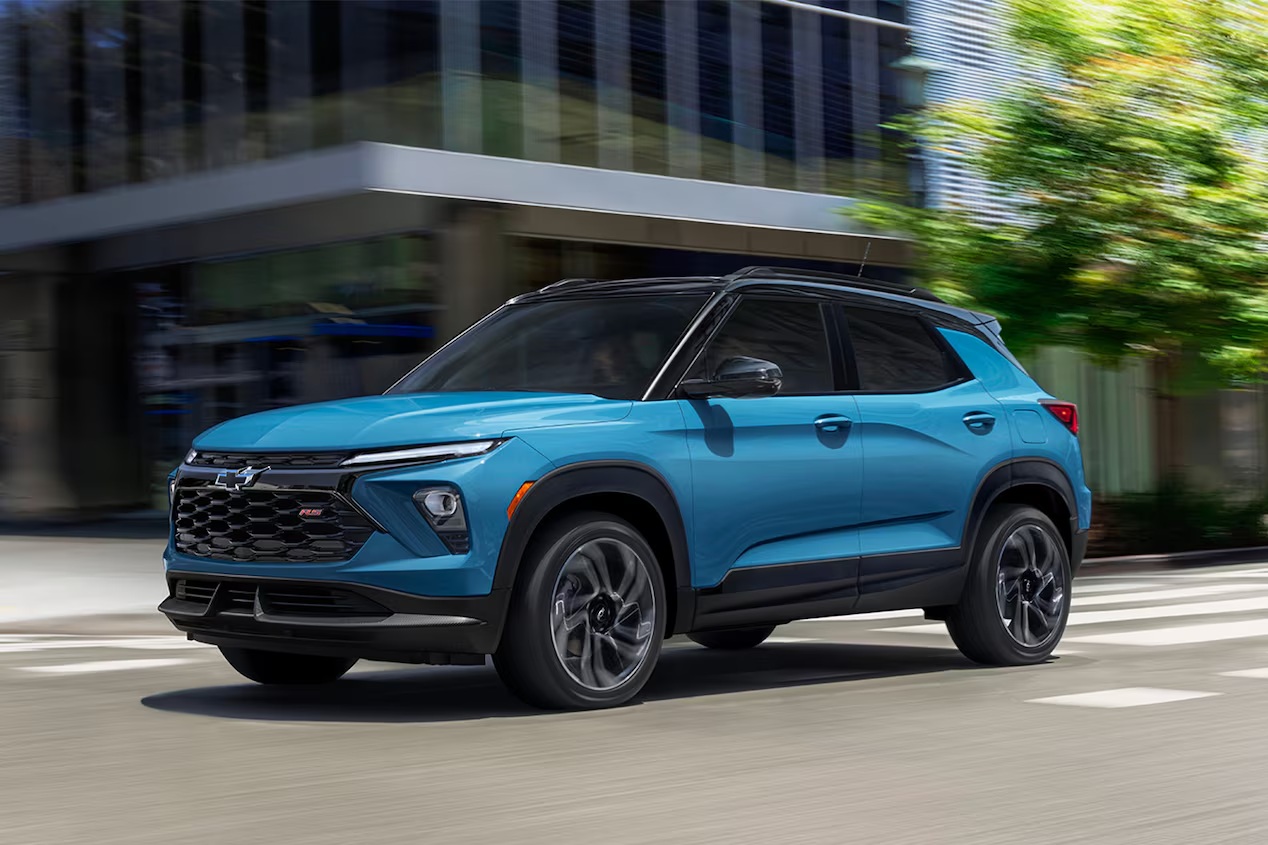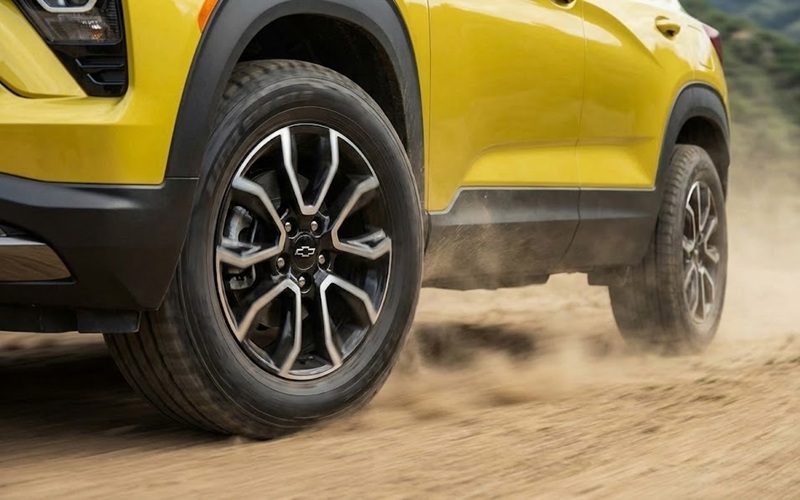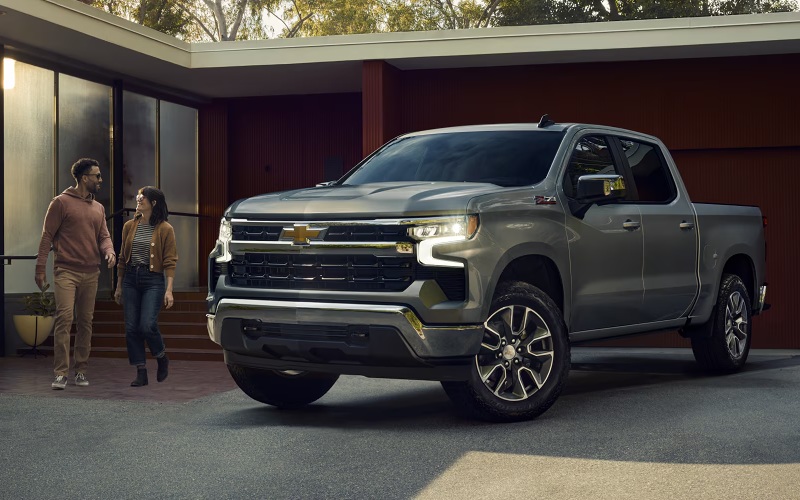Chevy Trailblazer Lane Assist Safety Feature: How It Works
The Chevrolet Trailblazer has established itself as a formidable contender in the compact SUV market, offering a blend of style, performance, and advanced safety features. Among its impressive array of driver assistance technologies, the lane assist system stands out as a crucial component in enhancing driver safety and comfort. This article delves into the intricacies […]
The Chevrolet Trailblazer has established itself as a formidable contender in the compact SUV market, offering a blend of style, performance, and advanced safety features. Among its impressive array of driver assistance technologies, the lane assist system stands out as a crucial component in enhancing driver safety and comfort. This article delves into the intricacies of the Chevy Trailblazer lane assist system, exploring how it works, what to avoid when using it, and the maintenance required to keep it functioning optimally.

What is Lane Assist Technology?
Lane assist, also known as lane keep assist or lane departure warning, is an advanced driver assistance system (ADAS) designed to help drivers maintain their vehicle’s position within a lane. This technology has become increasingly common in modern vehicles, including the Chevy Trailblazer, as part of a broader suite of safety features aimed at reducing accidents and improving overall road safety.
How Lane Assist Works in the Chevy Trailblazer
The Chevy Trailblazer lane assist system is a sophisticated piece of technology that combines several components to function effectively:
- Cameras and Sensors: The system primarily relies on forward-facing cameras, typically mounted near the rearview mirror. These cameras continuously scan the road ahead, focusing on lane markings.
- Image Processing: The data captured by the cameras is processed in real-time by the vehicle’s onboard computer. This processing involves complex algorithms that can identify various types of lane markings, including solid lines, dashed lines, and even faded or partially obscured markings.
- Steering Assistance: When the system detects that the vehicle is unintentionally drifting out of its lane, it can provide gentle steering input to guide the car back into the center of the lane.
- Driver Alerts: In addition to steering assistance, the system provides visual and audible warnings to alert the driver of potential lane departures.
The Chevy Trailblazer lane assist system is part of a broader suite of safety features known as Chevy Safety Assist, which comes standard on all Trailblazer models.
Key Features of the Trailblazer Lane Assist
- Lane Keep Assist with Lane Departure Warning: This feature not only warns the driver when the vehicle is drifting out of its lane but also provides gentle steering input to help keep the vehicle centered in its lane.
- Adaptive Steering: The system can adjust its sensitivity based on the vehicle’s speed and road conditions, providing more assistance at higher speeds and less intrusive input at lower speeds.
- Integration with Other Safety Systems: The lane assist system works with other safety features like forward collision alert and automatic emergency braking, creating a comprehensive safety net for the driver.
- Customizable Settings: Drivers can often adjust the sensitivity of the lane assist system through the vehicle’s infotainment system, allowing for a personalized driving experience.
Benefits of Lane Assist in the Chevy Trailblazer
- Reduced Risk of Accidents: By helping to prevent unintentional lane departures, the system significantly reduces the risk of side-swipe collisions and run-off-road accidents.
- Fatigue Mitigation: The system can help combat driver fatigue on long drives by providing an extra layer of vigilance.
- Improved Driving Confidence: Especially for newer drivers or those driving in unfamiliar areas, lane assist can provide an added sense of security and confidence.
- Enhanced Overall Safety: As part of the Chevy Safety Assist suite, lane assist contributes to the Trailblazer impressive 5-star overall safety rating from the National Highway Traffic Safety Administration (NHTSA).
What to Avoid When Using Lane Assist
While the lane assist system in the Chevy Trailblazer is a powerful safety tool, it’s crucial to understand its limitations and use it responsibly:
- Don’t Rely Solely on the System: Lane assist is designed as an aid, not a replacement for attentive driving. Always maintain focus on the road and keep your hands on the steering wheel.
- Avoid Overriding the System Frequently: If you find yourself constantly fighting against the system’s inputs, it may be a sign that you’re not maintaining your lane position properly.
- Don’t Use in Poor Visibility Conditions: The system may not function optimally in heavy rain, snow, or fog when lane markings are obscured. Be prepared to take full control in these conditions.
- Avoid Sudden Lane Changes Without Signaling: The system works best when you use your turn signals for lane changes. Sudden, unsignaled lane changes can confuse the system and potentially lead to unintended steering inputs.
- Don’t Ignore System Warnings: If the lane assist system is providing frequent warnings, it clearly indicates that you need to pay more attention to your driving.
- Avoid Using on Unmarked Roads: The system uses clear lane markings to function properly. On roads without clear markings, the system may not be effective.
- Don’t Assume It Works in All Conditions: Extreme weather, construction zones, or areas with complex lane markings can challenge the system. Always be prepared to take full control.
Maintenance of the Lane Assist System
Proper maintenance of the lane assist system is crucial for its optimal performance and longevity. Here are some key maintenance considerations:
- Keep Sensors Clean: The cameras and sensors used by the lane assist system are typically behind the windshield. Keep this area clean and free from obstructions like dirt, snow, or stickers.
- Regular Calibration: After certain services or repairs, particularly those involving the suspension, steering, or windshield, the lane assist system may need recalibration. This should be done by a certified Chevrolet technician.
- Software Updates: Periodically, Chevrolet may release software updates for the lane assist system. Ensure your vehicle receives these updates during regular service intervals.
- Windshield Care: When replacing the windshield, ensure it meets the specifications required for the lane assist system to function correctly. Using the wrong type of glass can interfere with the system’s cameras.
- Alignment Checks: Regular wheel alignment checks are important, as misalignment can affect the lane assist system’s performance.
- Tire Maintenance: Proper tire inflation and regular rotation are crucial. Uneven tire wear can affect the vehicle’s handling and, consequently, the lane assist system’s effectiveness.
- System Checks During Service: During regular service appointments, have the technician check the lane assist system for any faults or required updates.
Lane Assist with Other Safety Features
The lane assist system in the Chevy Trailblazer doesn’t operate in isolation. It’s part of a comprehensive safety ecosystem that includes:
- Forward Collision Alert: This system works with lane assist to provide comprehensive frontal safety coverage.
- Automatic Emergency Braking: This feature can automatically apply the brakes to avoid or mitigate a collision in critical situations.
- Front Pedestrian Braking: This system enhances safety in urban environments by detecting and responding to pedestrians in the vehicle’s path.
- Following Distance Indicator: This feature helps maintain safe distances from vehicles ahead, complementing the lane assist system’s lateral safety focus.
- IntelliBeam High Beam Assist: Automatic high beam control ensures optimal visibility without blinding other drivers, enhancing the effectiveness of the lane assist system at night.
The Future of Lane Assist Technology
As automotive technology continues to evolve, we can expect lane assist systems in vehicles like the Chevy Trailblazer to become even more sophisticated. Future developments may include:
- Enhanced AI Integration: More advanced algorithms could allow the system to better predict and respond to complex traffic scenarios.
- Improved Sensor Technology: Higher resolution cameras and more advanced sensors could enhance the system’s ability to detect lane markings in challenging conditions.
- Greater Customization: Future systems might offer more personalized settings, adapting to individual driving styles and preferences.
- Integration with Navigation Systems: Lane Assist could work with GPS and mapping data to anticipate lane changes and provide more proactive assistance.
- Vehicle-to-Vehicle Communication: As connected car technology advances, lane assist systems could potentially communicate with other vehicles on the road, further enhancing safety.
Lane Assist for Optimal Safety in the Chevy Trailblazer
The lane assist system in the Chevy Trailblazer represents a significant advancement in automotive safety technology. By helping drivers maintain their lane position and providing alerts for potential dangers, it plays a crucial role in preventing accidents and enhancing overall driving safety. However, it’s important to remember that this system is designed to assist, not replace, an attentive driver.
Understanding how the lane assist system works, what to avoid when using it, and how to maintain it properly are key to maximizing its benefits. As part of the broader Chevy Safety Assist suite, lane assist contributes to making the Trailblazer a safer, more confident driving experience.
As we look to the future, we can expect lane assist technology to become even more sophisticated, further enhancing the safety and ease of driving. However, the fundamental principle remains: the most important safety feature in any vehicle is an alert, responsible driver. The lane assist system in the Chevy Trailblazer is a powerful tool, but it’s at its best when working in harmony with a skilled and attentive driver.


